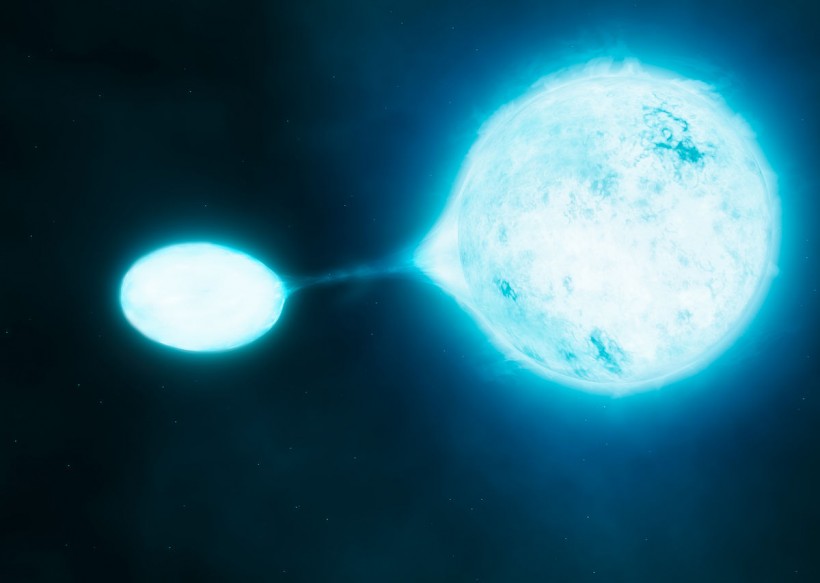Blue supergiants, which are intensely bright stars, have long puzzled scientists. But the study, titled "Evidence for Evolved Stellar Binary Mergers in Observed B-type Blue Supergiants" published in The Astrophysical Journal Letters, has shed light on these enigmatic celestial entities.
An international research effort, spearheaded by the Instituto de Astrofísica de Canarias (IAC), reports in the study that the majority of these stars form through the merger of two smaller stars that were previously part of a binary system.

(Photo : Wikimedia Commons/ESO/M. Kornmesser/S.E. de Mink)
Blue Supergiants: Massive Stars of the Universe
Astronomers have examined various types of stars, with some enjoying long lifespans, while others have shorter, more accelerated existences, culminating in explosive demises within tens of millions of years. Blue supergiants belong to the latter category and are dispersed throughout the night sky.
These colossal and radiant stars, typically range from 16 to 40 times the sun's mass, with surface temperatures surpassing 10,000 times that of the sun. Notably, examples like Rigel in the Orion constellation illustrate this stellar category.
Initially, it was presumed that these intensely bright stars stemmed from rapidly evolving stars reaching the end of their life cycle, suggesting their scarcity. However, their widespread presence in space baffles astronomers. Additionally, unlike most young massive stars found in binary systems, blue supergiants often exist solo.
READ ALSO: NASA's Hubble Space Telescope Unraveled Red Supergiant Monster Star's Dimming History
Influence of Stellar Mergers on the Formation of Blue Supergiants
While most blue supergiants lack gravitationally bound companions, diverging from the typical formation in binary systems, recent research provides insights. Analyzing 59 early B-type blue supergiants in the Large Magellanic Cloud, a team led by the Instituto de Astrofísica de Canarias (IAC) unveils compelling evidence indicating that these stars arise from binary system mergers.
This international study utilizes innovative stellar models and scrutinizes data from the Large Magellanic Cloud, offering crucial insights into blue supergiant formation.
IAC researcher Athira Menon explains that they conducted simulations to study the mergers between evolved giant stars and their smaller companions across various parameters, considering their interaction and fusion during the process. According to Artemio Herrero, an IAC researcher and co-author, this sheds light on the presence of blue supergiants in an 'evolutionary gap' not predicted by classical stellar physics.
This theory aligns with observed characteristics of blue supergiants across the universe. Lennon notes that stars resulting from such mergers better replicate surface composition, particularly nitrogen and helium enrichment, compared to traditional stellar models.
The researchers aim to delve deeper into the role of stellar mergers in galaxy and star formation, intending to investigate the demise of these blue supergiants, which could lead to the formation of neutron stars or black holes.
This study marks significant progress in understanding the formation of blue supergiants and underscores the crucial role of stellar mergers in shaping galaxy morphology and stellar populations. Future research will explore the explosive fate of these blue supergiants and their contribution to the black hole-neutron star landscape.
RELATED ARTICLE: Is Betelgeuse Going Supernova? Red Supergiant Star Continues To Show Unexpected Behavior
Check out more news and information on Space in Science Times.














